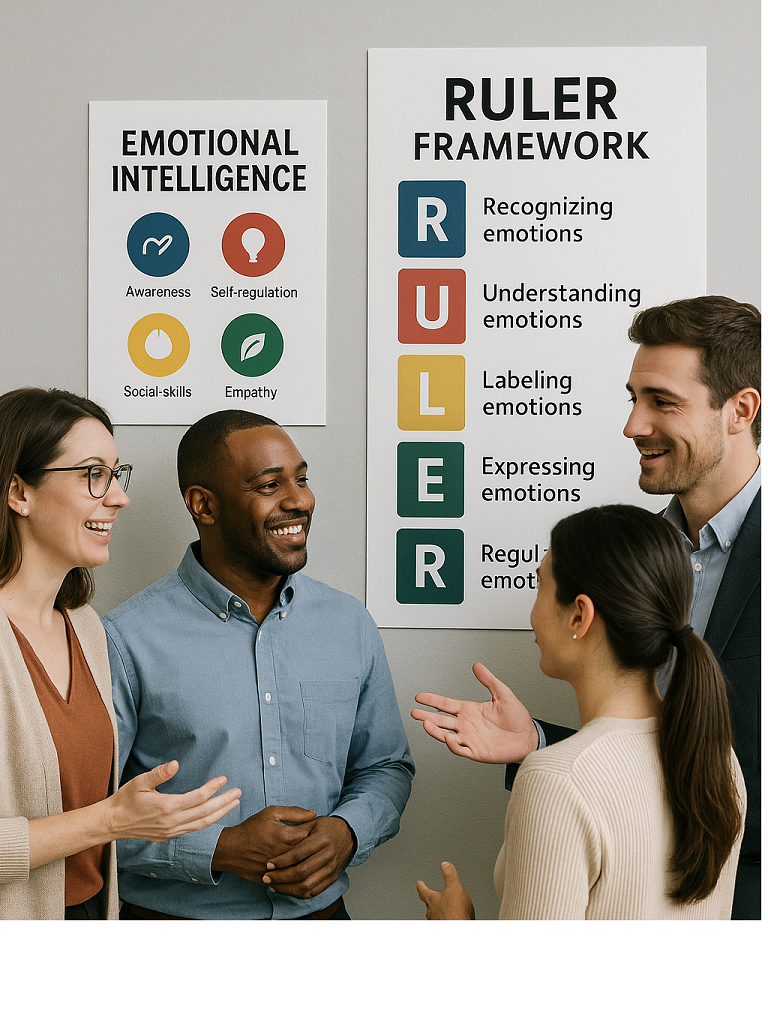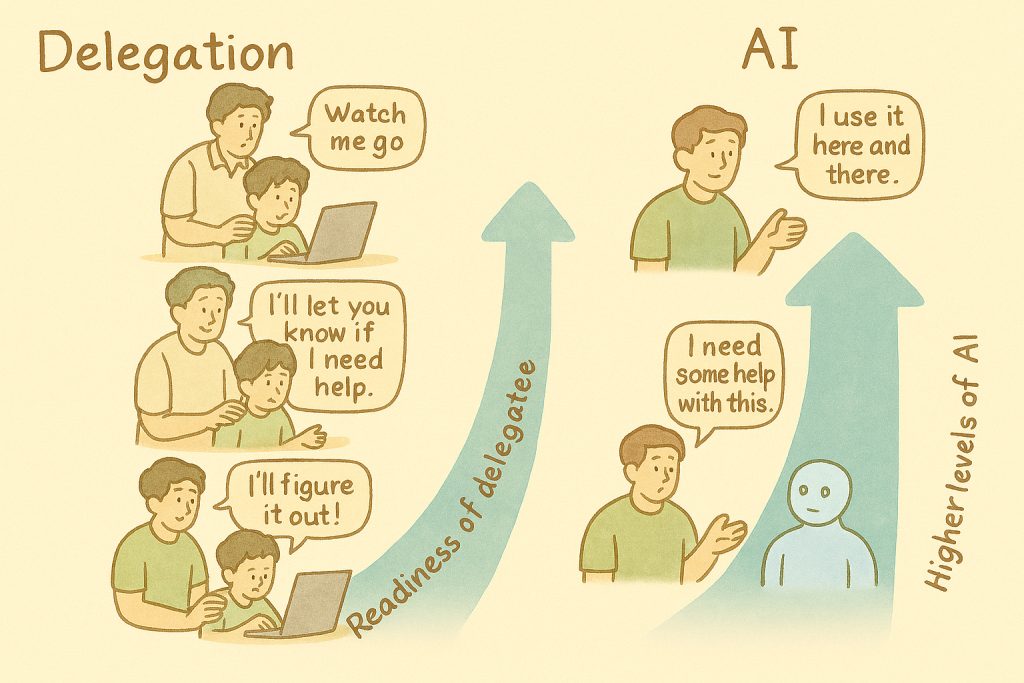When we talk about emotional intelligence (EQ), we often focus on the end results: staying calm in a crisis, showing empathy, or handling conflict gracefully. But these outcomes do not just happen. They rest on a more fundamental, often-overlooked skill: self-awareness.
EQ begins with the capacity to accurately perceive your own feelings, thoughts, and impulses. This foundation is key to self-regulation—the ability to manage disruptive emotions—and self-motivation, the drive to achieve goals with resilience. Beyond the self, EQ extends to empathy, understanding others’ feelings, and social skills, effectively managing relationships. Together, these components form a powerful framework for navigating your internal world and your interactions with others.
Awareness is the practice of noticing what’s happening inside you. It’s the tightening chest of anxiety, the rising frustration at a roadblock, the sudden joy from a small victory, or the hollow ache of disappointment. These aren’t just feelings; they’re emotional cues that give you a moment to pause. That pause is where you choose how to respond, rather than simply react.
This is not an easy task. It requires practice and a structured approach. That’s where the RULER framework, developed at the Yale Center for Emotional Intelligence, comes in. Initially created for schools, it’s an incredibly effective tool for adults to turn the subjective experience of emotion into objective, manageable data.
The RULER Framework: Your Emotional Toolkit
RULER is more than a catchy acronym. It’s a structured way to build emotional literacy.
Recognizing: The ability to notice emotions in yourself and others. This often shows up through nonverbal cues—body language, facial expressions, tone of voice, or even physical sensations like a racing heart or tense shoulders.
Understanding: Going a step deeper to connect emotions to their causes and anticipate their impact. For example, realizing, “I feel anxious because I’m uncertain about the outcome, and if I don’t manage this, it could affect my confidence in the meeting.”
Labelling: Using precise, nuanced vocabulary to name emotions accurately. Instead of a broad word like “angry,” you might identify whether you’re irritated, frustrated, resentful, or enraged. The more specific the label, the clearer your awareness and the better your response.
Expressing: Communicating emotions in ways that are authentic to you but also appropriate to the context. This could mean calmly stating your frustration in a meeting rather than lashing out, or openly sharing excitement to inspire a team.
Regulating: Applying strategies to manage emotions so they serve you rather than control you. This is not about suppressing feelings but about channelling them productively—for example, pausing to breathe, reframing a situation, or taking a short walk to reset.
Among the RULER steps, labelling is often the game-changer. Most adults have a limited emotional vocabulary—”upset,” “angry,” or “stressed.” But the difference between “I’m irritated” and “I feel underappreciated” is profound. One fuels defensiveness; the other opens the door to understanding.
A nuanced vocabulary is key and that entails having a wide and precise set of words to describe emotions, rather than relying only on broad, generic terms like happy, sad, angry, or stressed.
For example:
Instead of just “angry,” you might use irritated, annoyed, frustrated, resentful, bitter, or enraged—each carries a different shade of meaning.
Instead of just “angry,” you might use irritated, annoyed, frustrated, resentful, bitter, or enraged—each carries a different shade of meaning.
Why it matters:
It improves self-awareness: You can pinpoint what is really going on inside.
It improves communication: Others understand you better, reducing misunderstandings.
It improves communication: Others understand you better, reducing misunderstandings.
It helps with regulation: “I’m irritated” needs a different strategy than “I’m enraged.”
Used consistently, RULER helps you navigate complex feelings and respond with intention.
________________________________________
Scenario 1: The Hijacked Moment
Imagine this: You’re in a meeting, presenting an idea you’ve dedicated a week to. A senior colleague interrupts with a sharp critique before you can even complete your thought.
Before you can think, your frustration takes over. You cut him off: “You always do this—shooting things down without listening!”
The room falls silent. Your colleague gets defensive. The focus shifts from your brilliant idea to the conflict. Later, replaying the scene in your mind, you wish you’d handled it differently.
In this scenario, emotion hijacked the moment before awareness could step in.
________________________________________
Scenario 2: The Intentional Pause
Now, let’s re-run that moment with a small shift. The interruption happens, and you notice your chest tightening and your face warming. You pause, remembering your emotional toolkit.
Recognize: You notice the physical signs of rising frustration.
Understanding: You connect the feeling to being dismissed, not just to the critique itself.
Labelling: You name it clearly: “I’m feeling frustrated and a bit undervalued.” The labelling is key; most of us would categorize this as broadly “angry.”
Expressing: You articulate this constructively: “I hear your point. Can I finish sharing my full perspective with the team so we can all discuss it properly?”
Regulating: You take a deep breath, proud of choosing a response over a reaction, and stay grounded to keep the conversation productive.
That small pause changes everything. Instead of conflict, there’s dialogue. Instead of being consumed by emotion, you are channelling it toward a productive outcome.
________________________________________
From Awareness to Action
The difference between these two scenarios isn’t dramatic—it’s just a pause and a label. But this small shift can change not just one meeting but a lifetime of interactions.
EQ isn’t about ignoring emotions; it’s about noticing them, understanding them, and working with them. Awareness is the foundation. The RULER framework is the toolkit. Together, they help us move from impulsive, hijacked reactions to intentional action—and transform everyday challenges into opportunities for growth and connection.
What’s one emotional cue you’ll practice noticing today?




